1. resources
1.1. Streamwatch water bug kit - http://www.streamwatch.org.au/cms/resources/manual_pdfs/BugGuide.pdf
1.2. Field guide to Victorian fauna http://itunes.apple.com/au/app/field-guide-to-victorian-fauna/id423945031?mt=8
1.3. http://museumvictoria.com.au/bioinformatics/
1.4. http://australianmuseum.net.au/Bugwise
1.5. http://australianmuseum.net.au/Uploads/Documents/9382/The%20Invertebrate%20Collection%20Manual.pdf
2. Lessons
2.1. Lesson 1: go bush collect photo's and specimens
2.2. Lesson 2: review collection allocate individual organisms
2.3. lesson 3: research on individual organisms to complete database
2.4. lesson 4: back to the bush for more research, observation of habitat
2.5. lesson 5: update moodle database, prepare food chain examples for organisms, role of photosynthesis and respiration
2.6. lesson 6: use database to prepare food web, identify adaptations on organisms
2.7. Lesson 7: What are the effects of bushfire, drought and flood on an ecosystem
2.8. Lesson 8: Continue food web presentation. Consider effect of bushfire, drought and flood on your food web.
2.9. Lesson 9: Work on presentation: why should i care about the environment?
2.10. Lesson 10: spare lesson to finalise work for submission
3. Lesson Resources
3.1. Lesson 1: field data collection tool
3.2. lesson 2: database activity in moodle
3.3. Lesson 3: access to identification resources
3.4. lesson 4: field data collection tool
3.5. lesson 5: what is a food chain? Include a template for food chains?
3.6. lesson 6: what is a food web? What are adaptations? include template for food webs?
3.7. Lesson 7: scaffold for effects on ecosystems
3.8. Lesson 8: continues from lesson 6 and 7
3.9. Lesson 9: needs stimulus and scaffold
4. inquiry driven lessons?
4.1. lesson 1: What bugs are out there?
4.2. lesson 2: what bugs did i bring back?
4.3. lesson 3: how can i organize all this information?
4.4. lesson4: what more can i learn?
4.5. Lesson 5: where does the energy from the sun go?
4.6. lesson 6: how do these bugs and plants interact? how can i show all these interactions?
4.7. lesson 7: are floods, droughts and bushfires all bad for the ecosystem?
4.8. lesson 8: how do i make my food web really communicate scientific information?
4.9. Lesson 9: why should i care about the environment?
5. poster depicting the key features of a chosen insect, identifying adaptations
5.1. http://www.australianmuseum.net.au/image/Ant
6. Key Science Content from syllabus
6.1. food chains
6.2. food webs
6.2.1. producers
6.2.2. consumers
6.2.3. decomposers
6.3. ecosystems
6.3.1. photosynthesis
6.3.2. respiration
6.3.3. effects
6.3.3.1. bushfires
6.3.3.2. drought
6.3.3.3. flood
6.3.4. habitat
6.3.4.1. biotic
6.3.4.2. abiotic
6.4. adaptations
6.4.1. factors causing adaptations
6.4.1.1. stay alive
6.4.1.1.1. surviving in environment
6.4.1.1.2. finding food
6.4.1.1.3. protect from prey
6.4.1.2. reproduce
6.4.1.2.1. sexual/asexual
6.4.1.2.2. newborn survival
6.5. atmosphere
6.5.1. identify gases
6.5.2. difference between atmosphere and space
6.5.3. importance to life of:
6.5.3.1. oxygen
6.5.3.2. nitrogen
6.5.3.3. carbon dioxide
6.5.3.4. methane
6.5.3.5. ozone
7. inquiry ideas
7.1. what bugs are out there in the bush?
7.2. who eats who in the Terrey Hills bush?
7.3. what is an ecosystem?
7.4. what would happen to the Terrey Hills bush if a flood/bushfire/drought occurred?
7.5. if an bug was 100 times bigger could it survive?
7.6. what adaptations can i identify in a organism?
7.7. Case study of National Park (Smith Creek) Is it the best land use?
7.8. Ants: what do thwy tell us about the environment?
7.9. why should i care about the environment?
8. Logistics for learning
8.1. insect collection
8.1.1. real?
8.1.1.1. bug killing?
8.1.1.2. bug storage
8.1.2. digital?
8.2. plant collection
8.3. data collection on insect
8.3.1. dimensions
8.3.1.1. height
8.3.1.2. length
8.3.1.2.1. of individual components
8.3.1.3. weight
8.3.2. Photograph + drawing/diagram
8.4. insect identification
8.5. how will students record their data?
8.6. what will students submit?
8.6.1. food chain examples for their collected bug and plant
8.6.2. database entry for their insect
8.6.2.1. photo
8.6.2.2. name
8.6.2.3. dimensions
8.6.2.4. data for food chain and food web generation
8.6.2.4.1. food
8.6.2.4.2. prey
8.6.2.4.3. habitat
8.6.3. blog post or audio or photo esay on why should i care about the environment?
8.6.4. food web - poster, diorama,
9. Key Skills from Syllabus
9.1. data collection
9.1.1. first hand
9.1.1.1. observation
9.1.1.2. Measurement
9.1.2. secondhand
